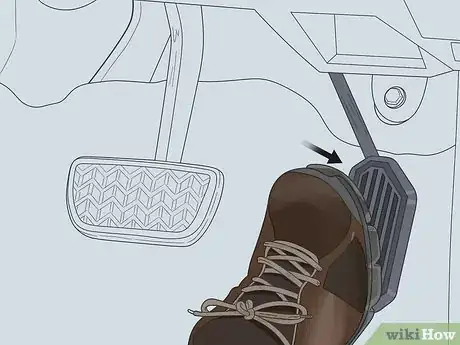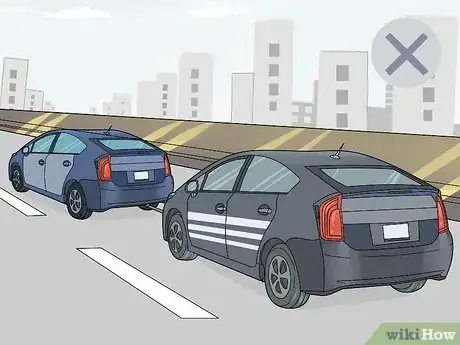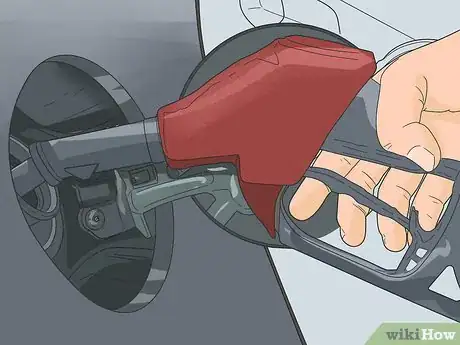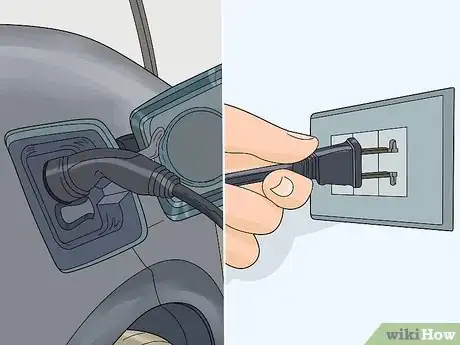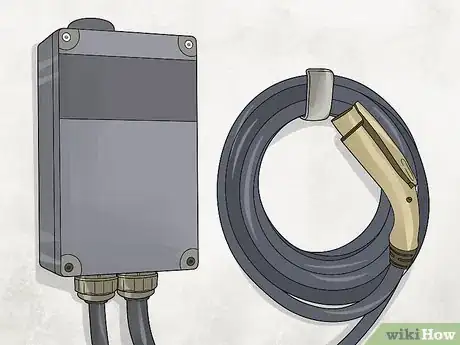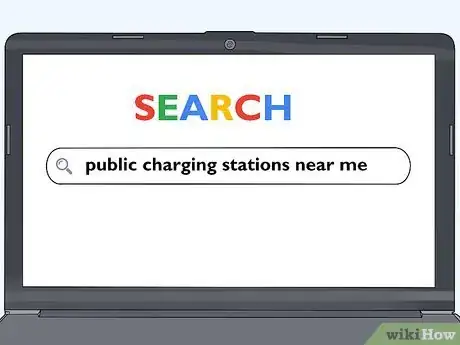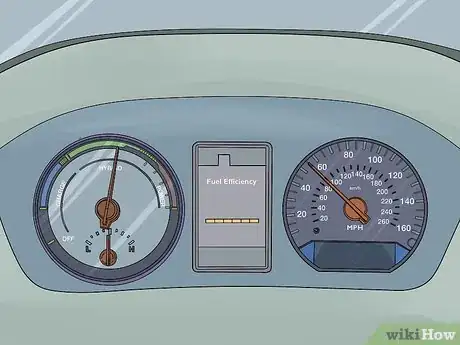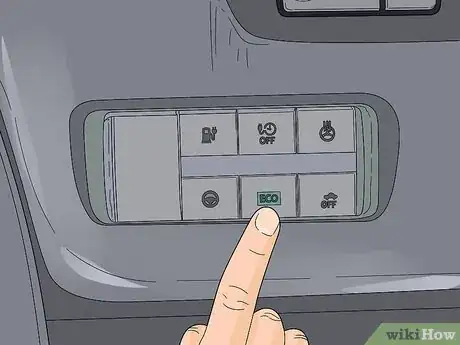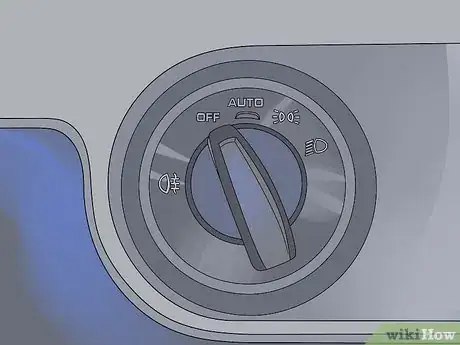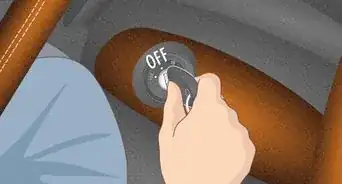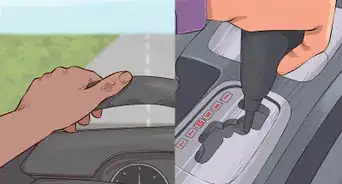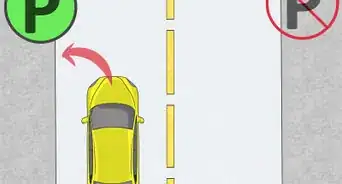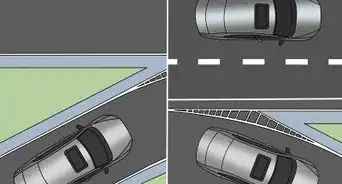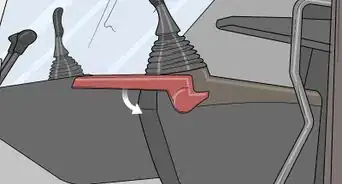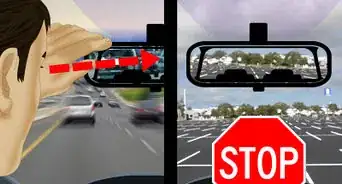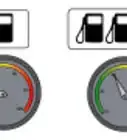This article was co-authored by Jacqueline Regev. Jacqueline Regev is a Driving Instructor and the Founder & CEO of Bubble of Safety Driving School. With over 20 years of education experience, she specializes in encouraging people to develop their skills to become safe and courteous drivers. Jacqueline earned a Bachelor's Degree from UCLA and an MA from Chapman University. She is also pursuing a PhD from UC Santa Barbara.
There are 11 references cited in this article, which can be found at the bottom of the page.
This article has been viewed 6,842 times.
A plug-in hybrid is a type of vehicle that can operate solely on electricity for a certain amount of time before switching to a mixture of electricity and gasoline like a normal hybrid. This makes them even more fuel-efficient than average hybrids. If you’d like to help the environment and drive a plug-in hybrid, you’re in luck! They’re very easy to operate, and the only extra maintenance they need is charging when they aren’t in use. Follow the ideal charging and driving practices to get the top energy efficiency from your hybrid.
Steps
Driving the Car Efficiently
-
1Accelerate quickly to enter hybrid mode. Hybrids work best when you're cruising at a steady speed. If you’re getting on the highway, press the gas pedal down to accelerate up to your cruising speed quickly. This burns more energy momentarily, but increases the car’s overall efficiency because you’ll reach cruising speeds faster.[1]
-
2Maintain a steady pace while driving. Just like with gas cars, smooth driving is the best way to maintain a hybrid’s efficiency. Once you reach your cruising speed, keep steady pressure on the pedal to maintain your speed. Only press the brake if you have to slow down.[2]
- Hybrids are most efficient up to about 50–55 mph (80–89 km/h), after which they start losing energy efficiency. Keep your highway speeds at that level for the best results, as long as it’s within the speed limit.[3]
- This may not be possible with city or neighborhood driving, when you’ll have to stop at red light and stop signs. Do your best to drive smoothly. Avoid accelerating too suddenly to avoid jerky movements.
- Don’t press the gas pedal harder to get up hills. Maintain the pressure and let your speed drop so the engine doesn’t have to burn more energy.
- Cars have fuel efficiency and align with community standards for speed limits.
- If you drive at the posted speed limit, that is the safe and appropriate speed for the particular driving conditions, it will save you gas and help you maintain your car better.
- But speeding can burn more gas and require you to stop and start more frequently, which puts extra wear on your brakes.
Advertisement -
3Brake smoothly so the battery stores more energy. Hybrids use a braking system that recovers lost energy. This braking system only works during smooth stops, however. Hard braking uses the car’s friction brakes and you’ll lose that energy. Press the brake down gently and come to controlled, steady stops. This maintains the car’s energy efficiency.[4]
- Focus ahead of you and anticipate stops. For instance, if you see people putting on their brake lights up ahead, then start slowing down to come to a controlled stop.
- Don’t follow traffic too closely. This makes sudden stopping inevitable. Leave enough room for a slow stop.
- This only applies in a non-emergency situation. If you’re trying to avoid an accident, then brake as hard as you have to.
-
4Drive in the HOV lane if your state allows you to. As an incentive to get more people to use hybrids, some states allow hybrid owners to drive in the HOV lane, even if they don’t have any passengers. If your state allows this, take advantage of it. The HOV lane is usually less congested than the other lanes, meaning you can maintain a steady speed and keep the car’s fuel efficiency up.[5]
- In the US, the federal government keeps track of which states let hybrids drive in the HOV lane. For the list, visit https://afdc.energy.gov/laws/HOV.
- Remember, only do this if your state allows you to. If you drive in the HOV lane when you’re not supposed to, you could get a fine.
-
5Avoid towing or hauling anything with your hybrid. Hybrid cars are passenger cars and not intended for hauling anything. The increased resistance will decrease its efficiency dramatically. If you do have to haul anything, use a different car.[6]
- If you have roof racks on your car, take anything off that you don’t need. Any items up there will increase wind resistance and drop your energy efficiency.
-
6Refuel the same way you would fill a gas-powered car. Refueling a hybrid is the same as refueling any other car. Pull up to the gas station when you're running low, pop the gas cap open, and fuel up until the tank is full.[7]
- Confirm the refueling process in your owner's manual to make sure there are no special steps.
- Use regular, 87-octane gasoline just like with other cars, unless your car's manufacturer recommends that you use a higher octane.
- A good general rule is refueling when your gas tank hits 1/4 tank. This prevents gunk from getting into the engine.
- Hybrid fuel efficiency varies, depending on the model. Most can get above 50 mpg, so with a 12–15 gallons (45–57 L) tank, you'd only have to refuel every 600–750 miles (970–1,210 km). That's about 3-4 times better than a typical gas-powered car.
Charging the Battery
-
1Check your owner’s manual for your car's charging procedure. While plug-in hybrids generally work the same way, different models may have different instructions for charging the battery. Read the owner’s manual that comes with your car and follow the charging practices that it tells you to.[8]
- Some hybrids might work best if you leave them plugged in at all times, and some might recommend only plugging the car in when its battery is dead. Use whichever practice the owner’s manual recommends.
- Most plug-in hybrids can travel on all-electric power for 10–50 m (0.010–0.050 km), after which they’ll start using gas and operating as a normal hybrid.
-
2Plug the car into a normal 120V home outlet to recharge. Most plug-in hybrids can connect to a standard, 120V outlet in your home. The cars come with a cord that hooks to the outlet and a port on the car. Press the button on your keys or the car dashboard to open up the car's charge port. Attach the standard side into an outlet in your home, then insert the connector into the charge port.[9]
- Recharging will be easiest if you have an outdoor outlet or one in your garage. Otherwise, run the charger inside with an extension cord.
- Charging from a 120V outlet usually takes 3-5 hours, depending on the car model. Some chargers have a light that indicates when the battery is charged.
- The charge port is usually near the front of the car, but the location varies from model to model.
-
3Install a 240V home power station for faster charging. A 240V power station, also called a level 2 station, is specialized for charging hybrids. They charge the vehicle in about 90 minutes, so they’re much more convenient if you charge your car often. Consider installing one if you want a faster charging option.[10]
- Home charging stations could cost from $500-1,000, plus the electricity cost of charging the car. Your state may grant a tax rebate if you install one in your home.
- Make sure that you comply with any local laws before installing a charging station. For example, you may need approval from your local government to install one.
-
4Locate public charging stations if you’re planning a long trip. There are thousands of public charging ports in many countries to help encourage people to drive hybrids. If you’ll be traveling far from home, plan ahead and find all of the public charging stations on your route. That way, you can keep your car charged and keep your fuel costs for the entire trip very low.[11]
- Public charging stations are 240V so your car can fully recharge in about 90 minutes.
- The US government keeps a database of electric charging stations throughout the country. For a full list of their locations, visit https://afdc.energy.gov/fuels/electricity_locations.html#/find/nearest?fuel=ELEC.
- Some companies have also set up private charging stations. For a fee, you can book a port in advance so you know it'll be available when you arrive. This can avoid long waits for others to finish charging. Do an internet search for private stations in your area.
- Your car can still run on gasoline if your battery is completely empty on a long trip, so don’t worry about getting stuck. You’ll just have the fuel efficiency of a normal gasoline car.
Maintaining Energy Efficiency
-
1Watch the information display to track your energy use. Most hybrids come with a display that shows your current fuel efficiency. Use this information to adjust your driving. For example, if you’re driving fast and see your efficiency falling, try slowing down to bring the efficiency back up.[12]
- Remember to keep your eyes on the road while you’re driving. Only glace over at the display for quick looks.
-
2Switch to economy mode if your car has the option. Hybrids usually have an economy option to increase efficiency even more. This mode reduces power to non-essential features to decrease the drain on the battery. In economy mode, you can operate for longer on electricity-only mode and burn far less fuel.[13]
- Remember that some operational features might not work as well with economy mode on. Your acceleration may be slower and your AC may not run as strongly, for example.
-
3Turn your headlights off in the daytime when it’s bright. The headlights pull energy from the car battery and reduce your efficiency. If it’s daytime and bright out, then you don’t need the headlights. Turn them off to conserve energy.[14]
- Remember to only turn the headlights off if it’s safe and bright. If you enter a tunnel or it’s raining, turn them on.
- Some newer hybrids adjust the headlights automatically according to the brightness. If your car has this option, use it for the optimal headlight levels.
-
4Keep your tires filled up. If your tires are below capacity, the car has to work harder to maintain its speed. This burns more energy. Check your tire levels and make sure they are at the correct levels. If they’re too low, add air to bring the pressure back up.[15]
- Normal tire recommendations are 30-32 psi. If your levels are lower than that, add some air.
- The recommended psi is usually printed on the side of the tire. Check here if you aren’t sure what the ideal level is.
-
5Limit the number of devices you plug in to save electricity. If you plug in any devices, like your phone, they’ll draw electricity from the battery. Only plug in devices if they’re essential, like if your phone is about to die. Other than that, keep devices unplugged.[16]
References
- ↑ https://www.greencarreports.com/news/1077339_hybrid-driving-tips-maximize-mpg-minimize-cost
- ↑ https://www.greencarreports.com/news/1077339_hybrid-driving-tips-maximize-mpg-minimize-cost
- ↑ https://afdc.energy.gov/data/10312
- ↑ https://www.fueleconomy.gov/feg/evtips.shtml
- ↑ https://afdc.energy.gov/laws/HOV
- ↑ https://www.ucsusa.org/resources/how-do-plug-hybrid-electric-cars-work
- ↑ https://youtu.be/7SuGid789Jw?t=12
- ↑ https://www.fueleconomy.gov/feg/evtips.shtml
- ↑ https://phev.ucdavis.edu/about/faq-phev/
- ↑ https://phev.ucdavis.edu/about/faq-phev/
- ↑ https://afdc.energy.gov/fuels/electricity_stations.html
- ↑ https://youtu.be/y4Z1CihGNR4?t=47
- ↑ https://www.fueleconomy.gov/feg/evtips.shtml
- ↑ https://www.greencarreports.com/news/1077339_hybrid-driving-tips-maximize-mpg-minimize-cost
- ↑ https://youtu.be/y4Z1CihGNR4?t=24
- ↑ https://www.fueleconomy.gov/feg/evtips.shtml
- ↑ https://afdc.energy.gov/fuels/electricity_charging_home.html
